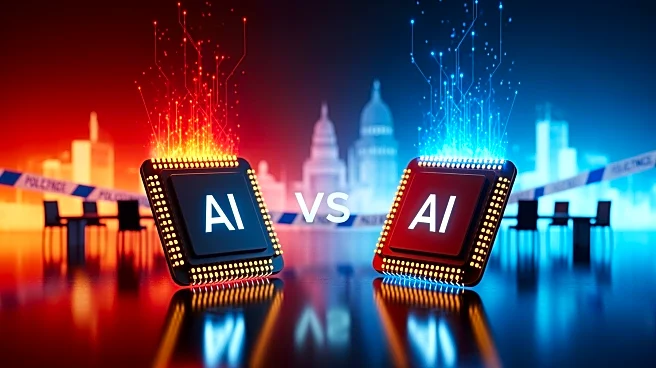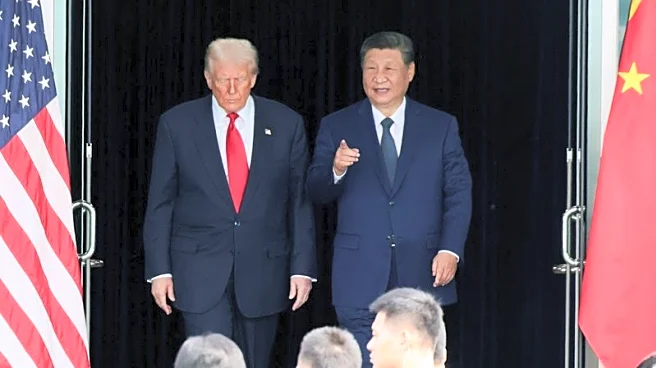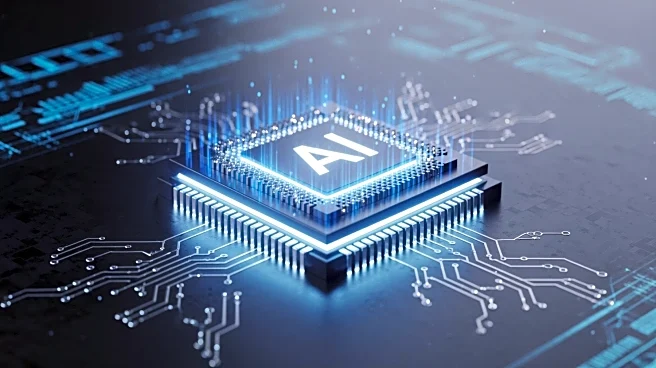What's Happening?
The competition between the United States and China in artificial intelligence (AI) is intensifying, with both nations adopting distinct strategies to achieve dominance. The U.S. focuses on frontier research
and simulation, leveraging concentrated talent and capital to push the capability frontier. In contrast, China emphasizes mass deployment and manufacturing iteration, aiming to capture value through manufacturing learning. This strategic divergence reflects differing approaches to value creation, with the U.S. prioritizing breakthrough innovation and China focusing on deployment scale. The outcome of this competition could determine control over the infrastructure layer of the 21st-century economy.
Why It's Important?
The AI race between the U.S. and China has significant implications for global economic leadership and technological advancement. The U.S.'s focus on innovation could lead to breakthroughs in AI capabilities, while China's emphasis on deployment may result in widespread adoption and integration of AI technologies. The competition could influence global supply chains, trade relations, and economic policies. Industries such as semiconductors, consumer electronics, and autonomous vehicles are likely to be impacted, with potential shifts in market dynamics and competitive landscapes. The outcome of this race could shape the future of AI and its role in the global economy.
What's Next?
Both nations are expected to continue investing heavily in AI research and development, with potential collaborations and partnerships emerging in the tech industry. The U.S. may focus on maintaining its lead in frontier innovation, while China could expand its deployment capabilities. The competition may lead to regulatory changes and policy adjustments as governments seek to support their respective AI strategies. The global tech industry will likely monitor these developments closely, with potential implications for investment, innovation, and market opportunities.












